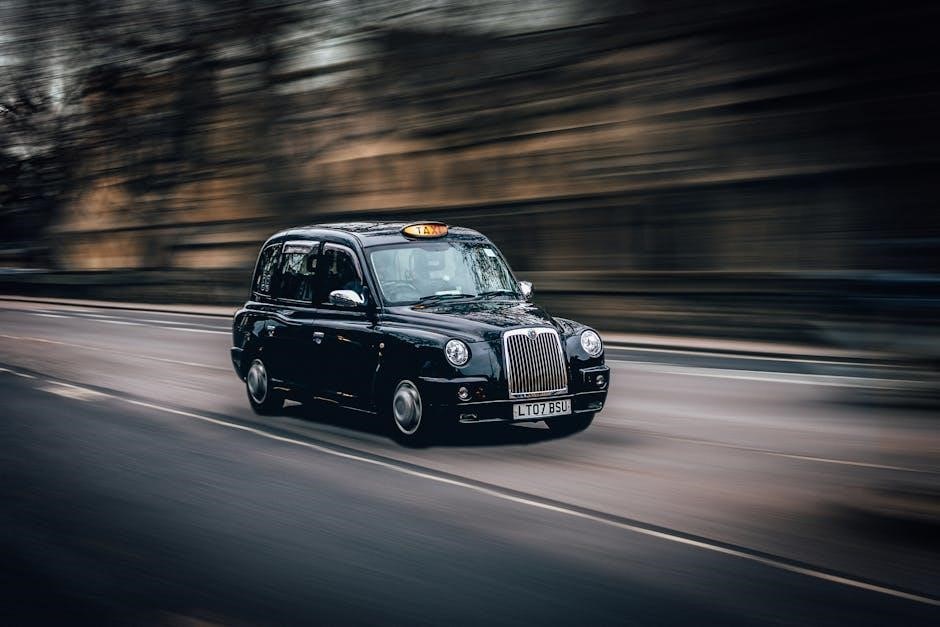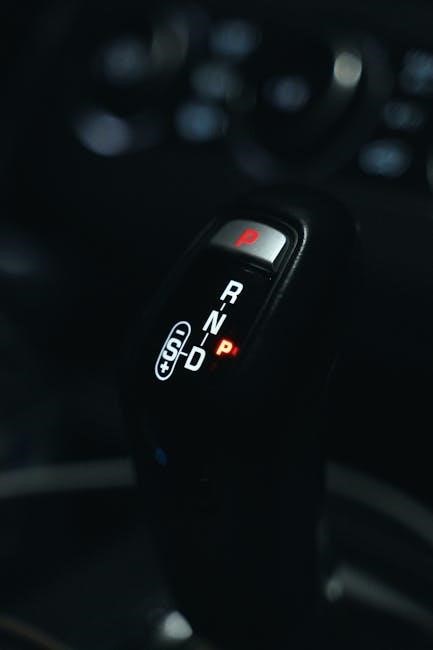Understanding Your UK Driving Licence
Your UK driving licence specifies the types of vehicles you can operate. If you passed your test in an automatic car, your licence will have a restriction code (78), limiting you to automatic vehicles only. Without this code, you can drive both manual and automatic cars. The licence categories and codes ensure compliance with UK driving laws, helping you understand your entitlements clearly.
What Does My Licence Say?
Your UK driving licence contains specific information about the types of vehicles you are legally permitted to drive. If you passed your driving test in an automatic car, your licence will display a restriction code (code 78), indicating that you are only authorised to drive vehicles with automatic transmission. This code is typically found in the restrictions section of your licence. If code 78 is present, you cannot legally drive manual cars. Conversely, if no such code is listed, you are entitled to drive both manual and automatic vehicles. UK licences are categorised, with category B covering most standard cars. The presence or absence of code 78 determines whether you fall under category B (manual and automatic) or category B automatic only. Always check your licence to confirm your entitlements before driving a manual or automatic vehicle. This ensures compliance with UK driving laws and avoids potential legal consequences. If you wish to upgrade your licence to include manual cars, you will need to pass a practical driving test in a manual vehicle.

Legal Implications of Driving a Manual Car
Driving a manual car with an automatic licence is illegal in the UK. If caught, you could face fines, penalty points, or even a court appearance. Additionally, your insurance may be invalidated, leading to severe financial and legal consequences.
Can I Drive a Manual Car with an Automatic Licence?
With an automatic licence in the UK, you are legally restricted from driving manual cars. The presence of a restriction code, typically code 78, on your licence indicates this limitation; Driving a manual car under these conditions is illegal and can result in penalties such as fines or penalty points. Additionally, your insurance may be invalidated, leading to severe financial repercussions if involved in an accident. To legally operate a manual vehicle, you must pass a practical driving test in a manual car, which will update your licence to include manual transmission entitlement. Retaking the test is possible if you fail, but it’s advisable to practice beforehand to enhance your chances of success. Thus, upgrading your licence is essential to drive manual cars legally and avoid potential legal and financial complications.

Upgrading Your Licence to Include Manual Cars

To upgrade your licence, you must pass a practical driving test in a manual car. You’ll need to display L plates while practising. If you fail, your automatic licence remains valid, but you can retake the test. Passing allows you to drive both manual and automatic vehicles legally.
What Do I Need to Do?
To upgrade your licence and gain permission to drive manual cars, you must pass a practical driving test in a manual vehicle. First, ensure you hold a valid UK provisional or full automatic driving licence. Practice driving a manual car with L plates displayed to build your skills. When ready, book and pass the DVSA practical driving test in a manual car. After passing, your licence will be updated to include manual transmission entitlement. If you fail, you can retake the test while continuing to drive automatic vehicles. It is essential to complete this process to legally drive manual cars in the UK. Without passing the manual test, you remain restricted to automatic vehicles under your current licence. Upgrading provides flexibility and broader driving opportunities.
Preparing for the Test
Preparing for the manual driving test requires consistent practice and a structured approach. Start by practicing in a manual car, focusing on clutch control, gear changes, and smooth acceleration. Begin in a quiet, safe area like a car park to build confidence. As you progress, practice on various roads to get accustomed to different driving conditions. Mastering the clutch and accelerator balance is crucial to avoid stalling. Regular practice helps develop muscle memory for seamless gear shifts. Additionally, study the Highway Code and familiarize yourself with driving laws and road signs. Consider taking lessons with a qualified instructor to refine your skills and address any weaknesses. The more you practice, the more confident and comfortable you will feel behind the wheel. Consistency is key to passing the test and becoming a proficient manual driver.

Pros and Cons of Having a Manual Licence
A manual licence offers more control and better fuel efficiency, while also providing access to a wider range of vehicles. However, it requires more skill and effort compared to automatic driving, which can be tiring in heavy traffic.
Advantages
Holding a manual driving licence offers several benefits. Firstly, it provides greater control over the vehicle, allowing for smoother acceleration and better handling, especially on uneven or steep terrain. Manual cars are often more fuel-efficient, reducing long-term running costs. Additionally, manual licences enable drivers to operate both manual and automatic vehicles, offering more flexibility when renting or borrowing cars. Learning to drive manually also enhances driving skills and situational awareness, making drivers more adept at handling various road conditions. Furthermore, manual cars are generally more affordable to purchase and maintain compared to automatics. Having a manual licence can also be advantageous in certain job roles, such as driving instructors or delivery drivers, where manual vehicles are often preferred. Overall, the ability to drive a manual car broadens opportunities and ensures greater independence on the road.
Disadvantages
Holding an automatic licence can have several drawbacks. Firstly, it restricts you to driving only automatic vehicles, limiting your options when renting, borrowing, or purchasing cars. Manual cars are often more readily available and affordable, so missing out on these can be inconvenient. Additionally, if you wish to upgrade to a manual licence, you will need to take another driving test, which incurs extra time and costs. Driving an automatic car can also feel less engaging for some drivers, as it requires less active involvement compared to manual driving. Furthermore, automatic vehicles typically have higher purchase and maintenance costs than their manual counterparts. In certain countries or regions, the availability of automatic cars may be limited, making travel or car sharing more challenging. Overall, relying solely on an automatic licence can be less practical and flexible for drivers who value versatility and cost-efficiency in their transportation choices.

International Driving Licence Considerations
US licence holders can drive manual cars in the UK, even with an automatic licence, while UK automatic licence holders cannot. This highlights key differences in international driving regulations and licence restrictions.
US Licence Holders in the UK

US licence holders can legally drive manual cars in the UK, even if their licence is restricted to automatic vehicles in the US. This is because UK law allows US drivers to operate any category of vehicle listed on their licence for up to 12 months. While UK licence holders with an automatic restriction cannot drive manual cars without passing an additional test, US visitors are exempt from this rule. This unique arrangement makes it easier for American tourists or temporary residents to explore the UK without worrying about transmission type restrictions. However, it’s always a good idea to familiarize yourself with UK road rules and driving practices before getting behind the wheel. Additionally, if you plan to stay in the UK for more than a year, you may need to apply for a UK driving licence to continue driving legally.
